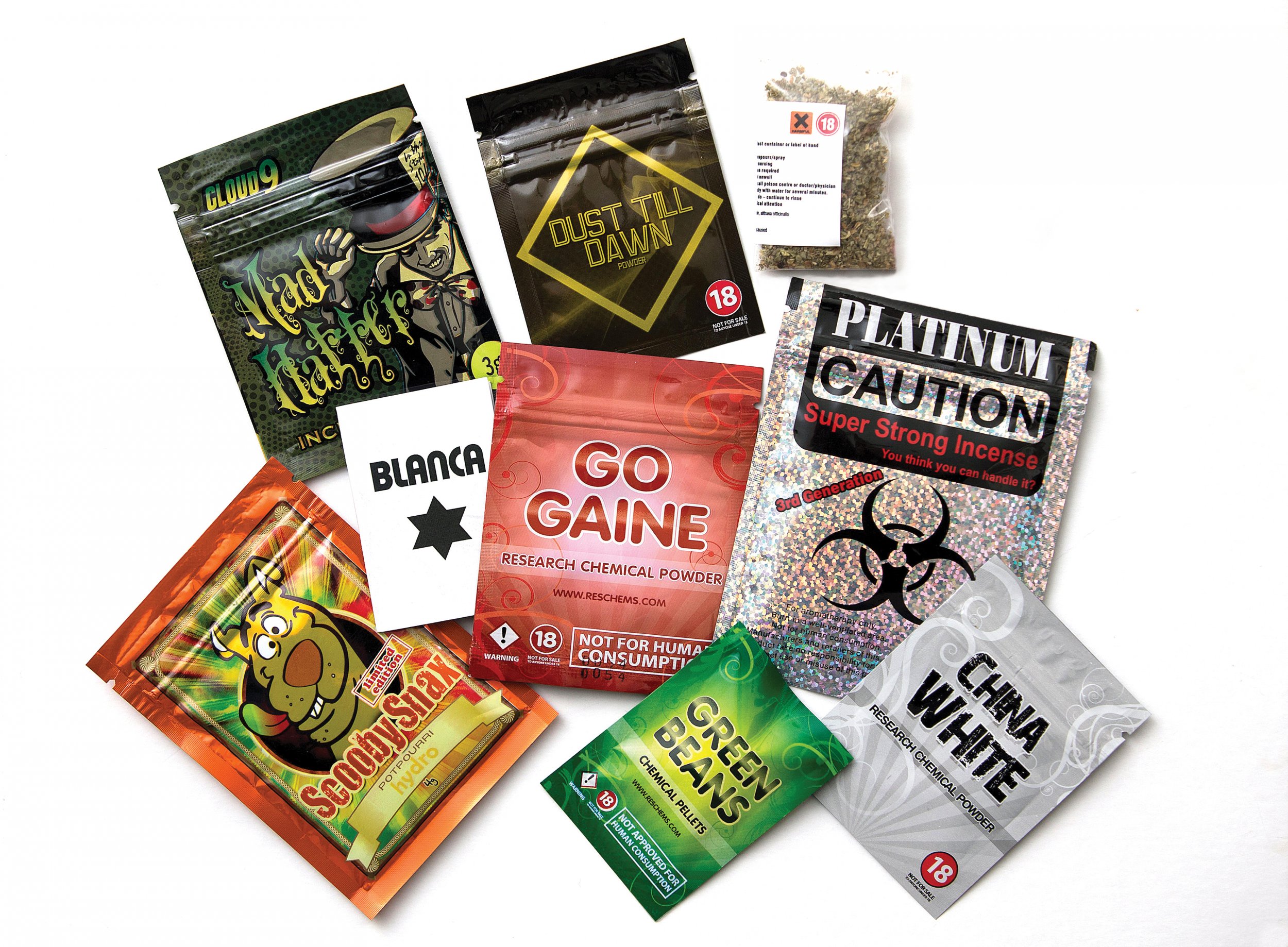
This article, written by Assistant Editor Alicia Kort, was excerpted from Newsweek's Special Edition, Weed U.S.A.
In July 2016, a group of Brooklyn drug users, who had come to be known as "zombies" by local observers and who got their drugs legally at gas stations, delis and bodegas, overdosed en masse in the Myrtle Avenue subway station and were rushed to area hospitals. "It's like a scene out of a zombie movie, a horrible scene," commuter Brian Arthur, 38, told The New York Times after watching three people collapse on his way to work. But this wasn't a scene out of The Walking Dead; this was another volume in the disturbing saga of synthetic marijuana or "spice." There are others: A homeless man attempted to "surf" on top of a subway car and was killed. Connor Eckhardt, 19, took one hit of spice at a party, fell into a coma and died. In Syracuse in 2015, a homeless man restrained in a stretcher broke himself free and, foaming at the mouth, turned on the EMTs trying to save him.
The recurring character in all these episodes is an innocuous bag of herbs, marketed as incense or potpourri. The packaging is clearly labeled "not for human consumption," but given that the contents have been doused with synthetic cannabinoids meant to mimic the THC found in cannabis, it's difficult to argue these herbs have any other purpose. Those who smoke synthetic marijuana are typically searching for the feeling that comes from smoking pot without legal stigma or the risk of a failed drug test. What they get more often are hallucinations, paranoia and, in some cases, sudden death.
Mark, a former spice smoker whose name has been changed at his request, began smoking spice when he was 17, after being put on probation following a run-in with the law. He thought synthetic marijuana would be the same as the pot he'd already been smoking, with the added bonus of not showing up on the random drug screenings he'd be subject to on probation. What he discovered was that it packed a much more powerful—and addicting—high.
"That's almost the reason I liked it so much, really," says Mark, now 23. "It got you a lot more stoned. It would change the way you thought." When Mark smoked traditional marijuana he would smoke a little after meals. When he started using spice, he smoked it every hour.
Spice was once even easier to access. It was sold at local gas stations and head shops, and to purchase it you only had to prove you were 18. But Mark, who lives in a small town, was able to use local connections to get shop owners to turn a blind eye before his 18th birthday.
In 2011, three years after it hit the market, the DEA banned five synthetic marijuana chemical compounds nationwide. As a result, suppliers have been forced to tinker with the chemical compound of spice to stay one step ahead of the DEA, a process of experimentation that has made some spice brands even more dangerous.
"I saw myself smoking it until I was an old man," says Mark. "But then I flopped. I couldn't walk; I couldn't stand. I passed out three times. I prayed to God. I thought I was going to die."
"These synthetic cannabinoids are oftentimes much more potent than THC," says Dr. Mike Baumann of the National Institute of Drug Abuse. "What you see is a side effects profile that's not consistent with THC in marijuana smoking: vomiting, hallucinations and schizophrenic-like symptoms." Because spice use can't be detected through a standard urinalysis, doctors and nurses often can't identify what patients are high on.
This side effect is also part of spice's appeal, and one of the many reasons it has grown in popularity among parolees and pro athletes.
"[Pro athletes] are in search of something to get them out of pain," says Brandon Haw, a retired NFL player. "But [they're looking] for something that won't have a drug test come out positive and create the possibility of losing their livelihood or worse. No one wants to end up being the latest scandal on the ESPN ticker."
Synthetic marijuana is not likely to disappear. According to Baumann, the only way to combat the epidemic is to make people aware of the dangers. The jury is still out on the negative effects of traditional cannabis, but most are willing to acknowledge it won't cause you to slip into a coma and die. The choice seems clear.
This was excerpted from Newsweek'sSpecial Edition, Weed U.S.A., by Issue Editor Tim Baker. For more on Marijuana in America, pick up your copy today.

Uncommon Knowledge
Newsweek is committed to challenging conventional wisdom and finding connections in the search for common ground.
Newsweek is committed to challenging conventional wisdom and finding connections in the search for common ground.





